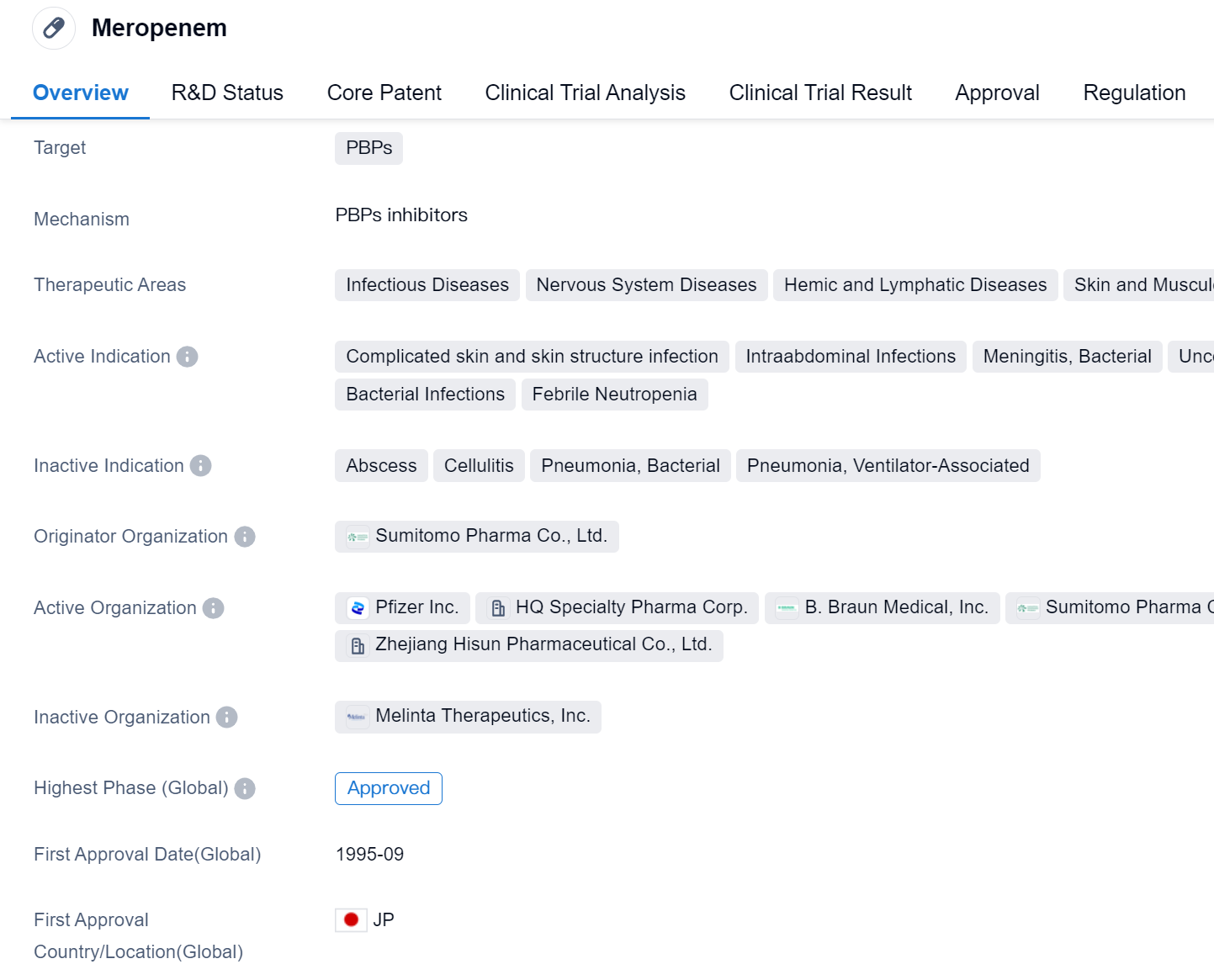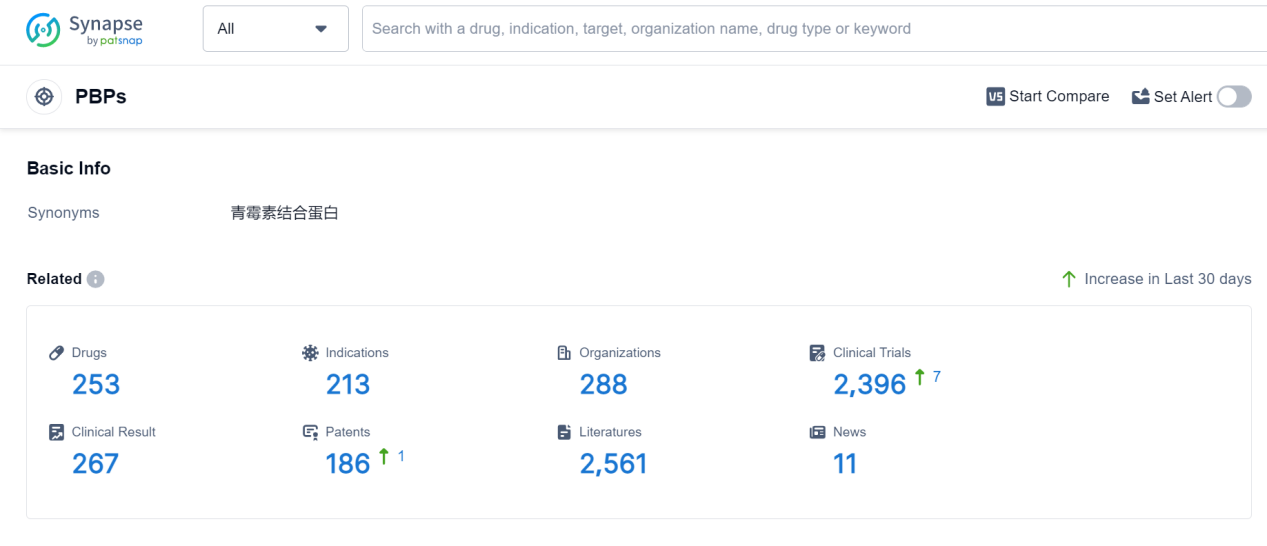Meropenem Unveiled: A Detailed Overview of its Revolutionary R&D Breakthroughs
Meropenem's R&D Progress
Meropenem is a small molecule drug that belongs to the class of antibiotics known as carbapenems. It primarily targets penicillin-binding proteins (PBPs) to exert its therapeutic effects. The drug has been approved for use in various therapeutic areas, including infectious diseases, nervous system diseases, hemic and lymphatic diseases, and skin and musculoskeletal diseases.
In terms of specific indications, meropenem is indicated for the treatment of complicated skin and skin structure infections, intraabdominal infections, bacterial meningitis, uncomplicated skin and skin structure infections, bacterial infections, and febrile neutropenia. These indications highlight the broad spectrum of activity of meropenem against various bacterial pathogens.
Meropenem was first approved in Japan in September 1995 by Sumitomo Pharma Co., Ltd., which is the originator organization of the drug. It has since received approvals in other countries as well, making it a globally recognized medication.
The regulatory status of meropenem is classified as an orphan drug. Orphan drugs are medications that are developed to treat rare diseases or conditions that affect a small number of patients. This classification often provides certain incentives and benefits to the manufacturer, such as extended market exclusivity and financial support for research and development.
👇Please click on the image below to directly access the latest data (R&D Status | Core Patent | Clinical Trial | Approval status in Global countries) of this drug.
Mechanism of Action for Meropenem: PBPs inhibitors
PBPs inhibitors are a type of drugs that target penicillin-binding proteins (PBPs). PBPs are enzymes found in the cell wall of bacteria and are responsible for the cross-linking of peptidoglycan, a major component of the bacterial cell wall. By inhibiting PBPs, these drugs disrupt the formation of the bacterial cell wall, leading to cell lysis and ultimately bacterial death.
From a biomedical perspective, PBPs inhibitors are important in the field of antimicrobial therapy. They are commonly used to treat bacterial infections caused by susceptible organisms. By specifically targeting PBPs, these inhibitors can effectively inhibit bacterial growth and replication, making them valuable in the treatment of various bacterial diseases.
It is worth noting that PBPs inhibitors are primarily used against Gram-positive bacteria, as Gram-negative bacteria have additional outer membrane barriers that make it harder for these drugs to penetrate and reach the PBPs. Additionally, the development of resistance to PBPs inhibitors by bacteria is a concern, and therefore, their use should be carefully monitored and combined with other antibiotics when necessary.
Drug Target R&D Trends for Meropenem
PBPs, or Penicillin-Binding Proteins, play a crucial role in the human body. These proteins are found in the cell walls of bacteria and are responsible for the synthesis and maintenance of the peptidoglycan layer, a vital component of bacterial cell walls. PBPs act as targets for antibiotics, particularly beta-lactam antibiotics like penicillin, by binding to them and inhibiting the enzymes that cross-link the peptidoglycan strands. This disruption weakens the bacterial cell wall, leading to cell lysis and ultimately bacterial death. Understanding the role of PBPs is essential in developing effective antibiotics and combating bacterial infections.
According to Patsnap Synapse, as of 7 Sep 2023, there are a total of 253 PBPs drugs worldwide, from 288 organizations, covering 213 indications, and conducting 2396 clinical trials.
👇Please click on the picture link below for free registration or log in directly if you have a freemium account, you can browse the latest research progress on drugs, indications, organizations, clinical trials, clinical results, and drug patents related to this target
Conclusion
Overall, meropenem is an established and widely used antibiotic in the pharmaceutical industry. Its approval in multiple countries and its classification as an orphan drug highlight its importance in the treatment of various infectious diseases. The drug's mechanism of action, targeting PBPs, allows it to effectively combat bacterial infections. With its long history of use and proven efficacy, meropenem continues to be a valuable asset in the field of biomedicine.






